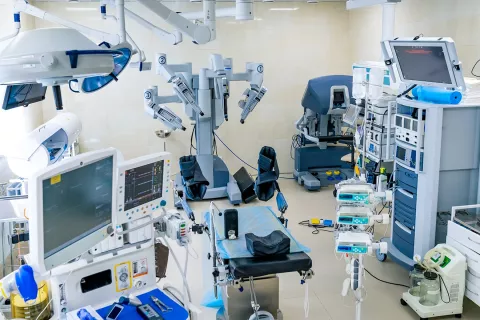
Post-approval change management is the process of monitoring and maintaining the safety, effectiveness, and performance of a medical device after it has received Regulatory approval and has been placed on the market. This process involves continuous evaluation and management of changes to the device, including changes to its design, labeling, manufacturing, and usage. The objective of post-approval management is to ensure that medical devices continue to meet Regulatory requirements and provide the intended benefits to patients and healthcare providers.
It is an important aspect of the medical device industry and is regulated by national and international Agencies, such as the US Food and Drug Administration (FDA and the European Medicines Agency (EMA). These Agencies require medical device manufacturers to report any significant changes to their devices and to provide evidence that the changes do not negatively impact the safety or effectiveness of the devices. The 510(k) clearance process is a significant milestone in bringing a medical device to market and serves as the foundation for post-approval change management.
What is a 510(k) Clearance?
The 510(k) clearance is a Regulatory process for medical devices in the United States that is administered by the US FDA. The process is named after the section of the Food, Drug, and Cosmetic Act that governs it (21 U.S.C. § 360(k)).
The purpose of the 510(k) clearance is to provide evidence that a medical device is as safe and effective as a legally marketed device, known as a predicate device.
What are the Types of Post-approval Changes?
In the medical device industry, post-approval changes are classified as either major or minor changes, depending on their potential impact on the safety and efficacy of the device.
- Major changes: Major changes refer to the changes that could significantly impact the safety or effectiveness of a medical device. Examples of major changes include changes to the device's intended use, design, labeling, or manufacturing process. Major changes typically require Regulatory approval before they can be implemented and may also require additional clinical testing or risk assessments.
- Minor changes: Minor changes refer to changes that do not have a significant impact on the safety or effectiveness of a medical device. Examples of minor changes include changes to the device's labeling, such as the addition of new contact information, or small changes to the device's manufacturing process, such as the use of a new supplier for a component. Minor changes may not require Regulatory approval but still need to be reported to the relevant Regulatory agencies.
It is important to note that the distinction between major and minor changes can vary depending on the type of medical device and the Regulatory framework in which it is marketed. In some cases, a change that may be considered minor in one context may be considered major in another. It is important for medical device manufacturers to have a clear understanding of the Regulatory requirements for post-approval changes and to work closely with Regulatory agencies to ensure that all changes are properly evaluated and reported.
What is the Process for Post-approval Change Management?
- Identifying the change: The first step in the post-approval change management process is to identify the change that is being proposed. This may involve evaluating changes to the device's design, manufacturing process, labeling, or usage.
- Evaluating the impact of the change: The next step is to evaluate the impact of the change on the safety and efficacy of the medical device. This may involve conducting risk assessments, testing, or simulations to determine the potential impact of the change.
- Determining the Regulatory requirements: Depending on the type of change and the Regulatory framework in which the device is marketed, there may be specific requirements for reporting and approval of the change. Medical device manufacturers should have a clear understanding of these requirements and work closely with Regulatory agencies to ensure that all changes are properly evaluated and reported.
- Implementing the change: Once the change has been evaluated and approved, the next step is to implement the change in a controlled and systematic manner. This may involve updating the device's design, manufacturing process, labeling, or usage instructions.
- Monitoring and evaluating the change: After the change has been implemented, it is important to monitor and evaluate its impact on the safety and efficacy of the medical device. This may involve collecting and analyzing data on the performance of the device, as well as conducting follow-up risk assessments and testing.
- Getting approval for the change(s) made: Finally, the medical device manufacturer must report the change to the relevant Regulatory agencies, as required by the Regulatory framework in which the device is marketed.
To ensure the safety and efficacy of medical devices on the market, it is important for medical device manufacturers to have a clear understanding of the Regulatory requirements for post-approval changes and to have a systematic and controlled approach in evaluating and implementing these changes.
In case of further queries concerning post-approval management or other 510(k) services, you can schedule a call with our Regulatory experts. Stay informed, and stay compliant!
Cross references:
https://www.freyrsolutions.com/medical-devices/fda-510k-clearance-process
https://www.freyrsolutions.com/medical-devices/us-fda-medical-device-registration









